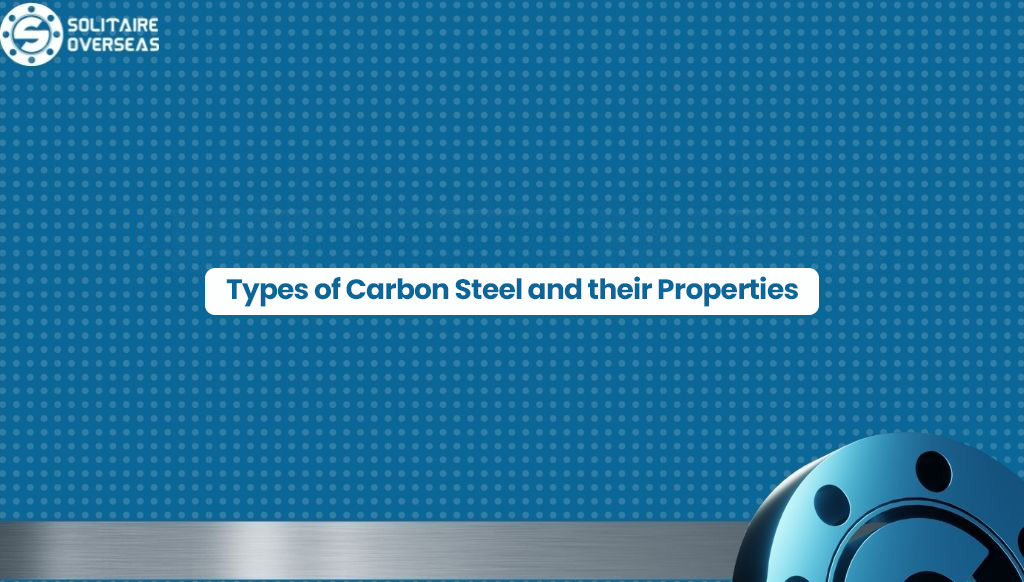Types of Carbon Steel and their Properties

Carbon steel is a type of steel characterized by a carbon content exceeding 0.02% but less than 2%. Steel with over 2% carbon is classified as cast iron, while steel with less than 0.02% carbon is known as wrought iron. It holds the distinction of being the most widely produced metal material, finding applications in various industries due to its desirable properties.
Carbon steel is widely utilized in the manufacturing of metal components such as cutting tools, steel cables, piano wires, springs, and knives. These applications demand strength, hardness, and wear resistance. Post-processing treatments like heat treatment are often applied to enhance these properties. The three primary categories of carbon steel are high-carbon, medium-carbon, and low-carbon steel.
Types of Carbon Steel
1. Low Carbon Steel
Typically containing a carbon content ranging between 0.04% and 0.30%, this category represents the largest group of carbon steel. Its applications span a wide array of shapes, extending from flat sheets to structural beams. To achieve desired qualities, adjustments to other elements are made. Renowned for its flexibility, malleability, and softness, this type of steel is a primary producer of items such as steel bars, stamping-resistant components, and specific steels. Through the carburizing process, the surface hardness of low-carbon steel can be enhanced, making it more resistant to abrasion and further augmenting its strength. This attribute not only adds to its versatility but also contributes to its suitability for various industrial applications.
Its properties are –
- High toughness
- Low tensile strength
- High weldability
- Low cost
- High ductility
- Low hardness
- High machinability
2. Medium Carbon Steel
Typically featuring a carbon content ranging from 0.31% to 0.60% and a manganese content between 0.60% and 1.65%, this type of steel is characterized by increased strength. While it poses challenges in terms of molding, welding, and cutting compared to low-carbon steel, its enhanced strength compensates for these difficulties. Medium carbon steels are often subjected to heat treatment as a common method for hardening and tempering. This makes them well-suited for producing durable products such as gears and studs that are expected to withstand significant wear and tear. The hardening process involves heating the medium carbon steel to a specific temperature and maintaining it until the desired hardness is achieved. If additional hardening is necessary, the steel can be soaked at a constant temperature and then cooled. This versatility in heat treatment contributes to the adaptability of medium carbon steel in various industrial applications. Primarily employed in the production of stainless steel, this category serves as a pivotal component in the manufacturing landscape.
Its properties are –
- Medium strength
- Moderate toughness
- Medium weldability
- Medium ductility
- Moderate machinability
3. High Carbon Steel
Often denoted as “carbon tool steel,” this variety typically boasts a carbon content ranging from 0.61% to 1.50%. The manipulation of high-carbon steel poses notable challenges in cutting, bending, and welding due to its tendency to become exceedingly hard and brittle when subjected to heat. To counteract this, chromium and manganese alloys are commonly added to enhance the material’s resistance to corrosion. High-carbon steel finds diverse applications, including the manufacturing of steel doors, rails, knives, general bearings, and steel frame molds used for shaping steel. Its robust composition and resistance to wear make it a preferred choice for applications requiring durability and strength. The incorporation of alloying elements not only addresses its inherent challenges but also broadens its utility in various industrial contexts.
Its properties are –
- High toughness
- Low machinability
- High strength
- Moderate weldability
- Low ductility
Conclusion
The range of carbon steels, encompassing low to high carbon compositions, demonstrates their pivotal significance across industries. While low-carbon steel offers flexibility, medium-carbon steel provides increased strength, and high-carbon steel, though challenging to work with, excels in durability.
SA179 Tubes specializes in the manufacturing of top-tier steel tubes. With a commitment to quality and innovation, we contribute significantly to the resilience and advancement of the steel sector.
For more information, contact us today!
